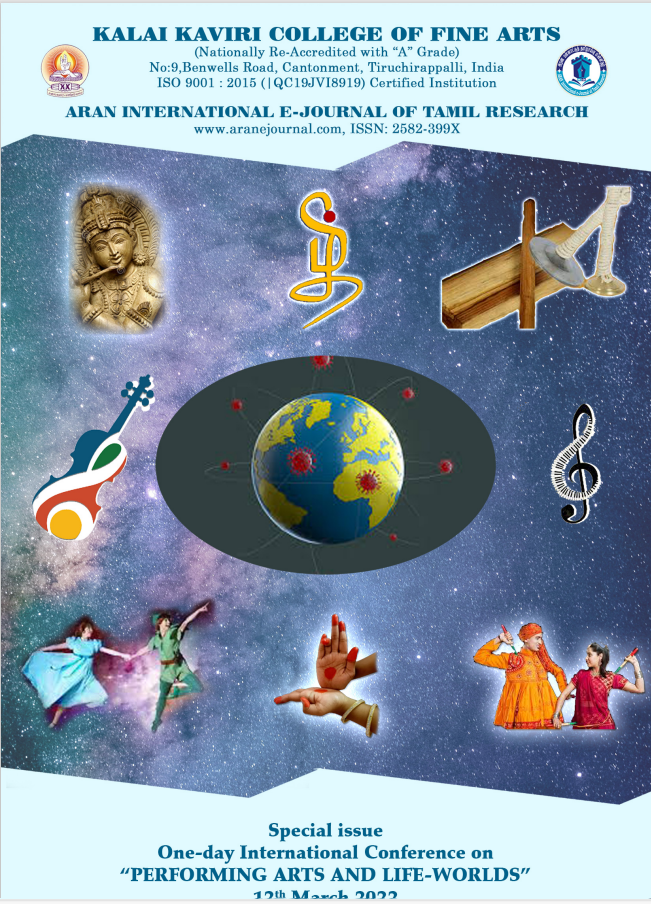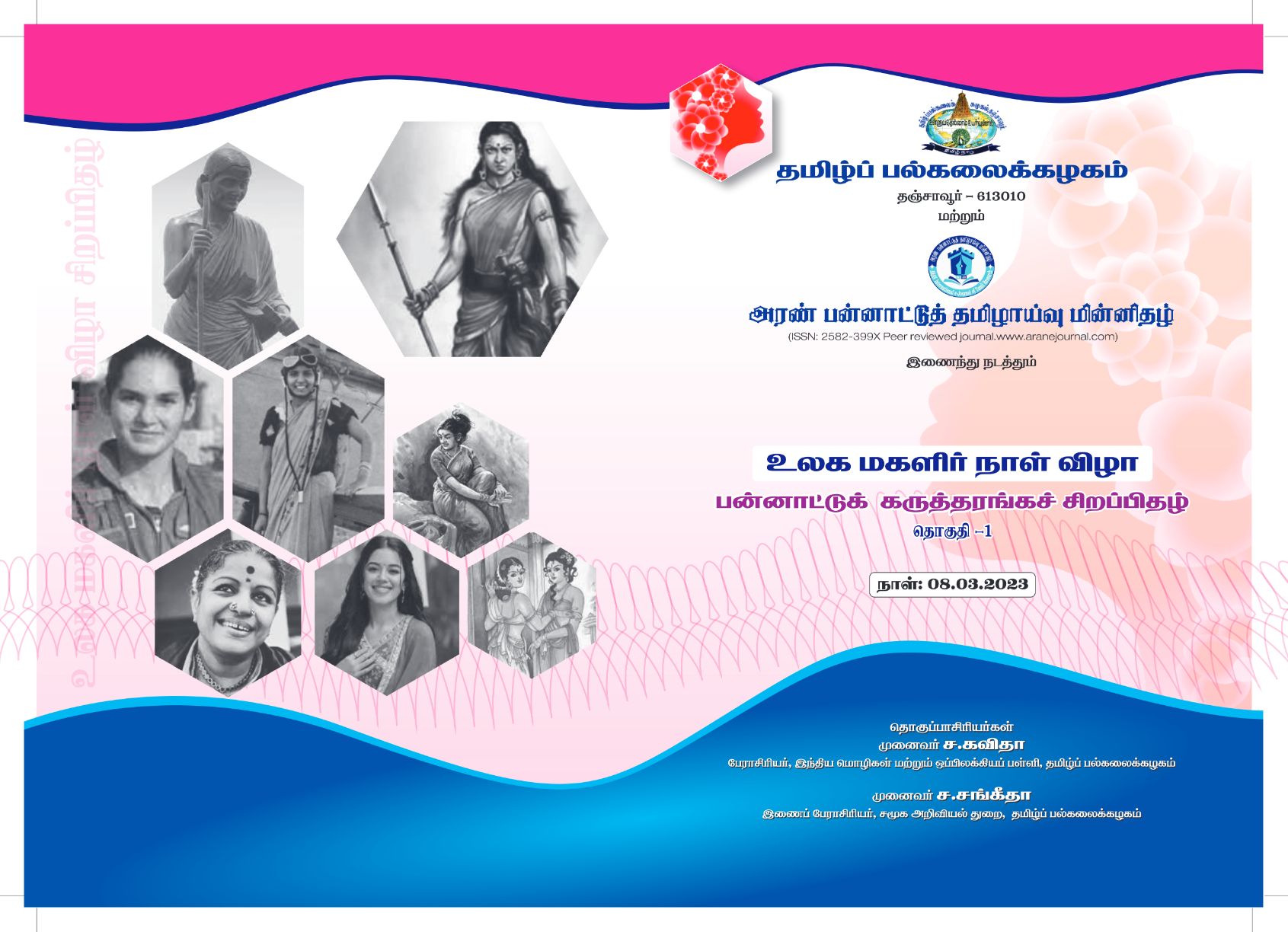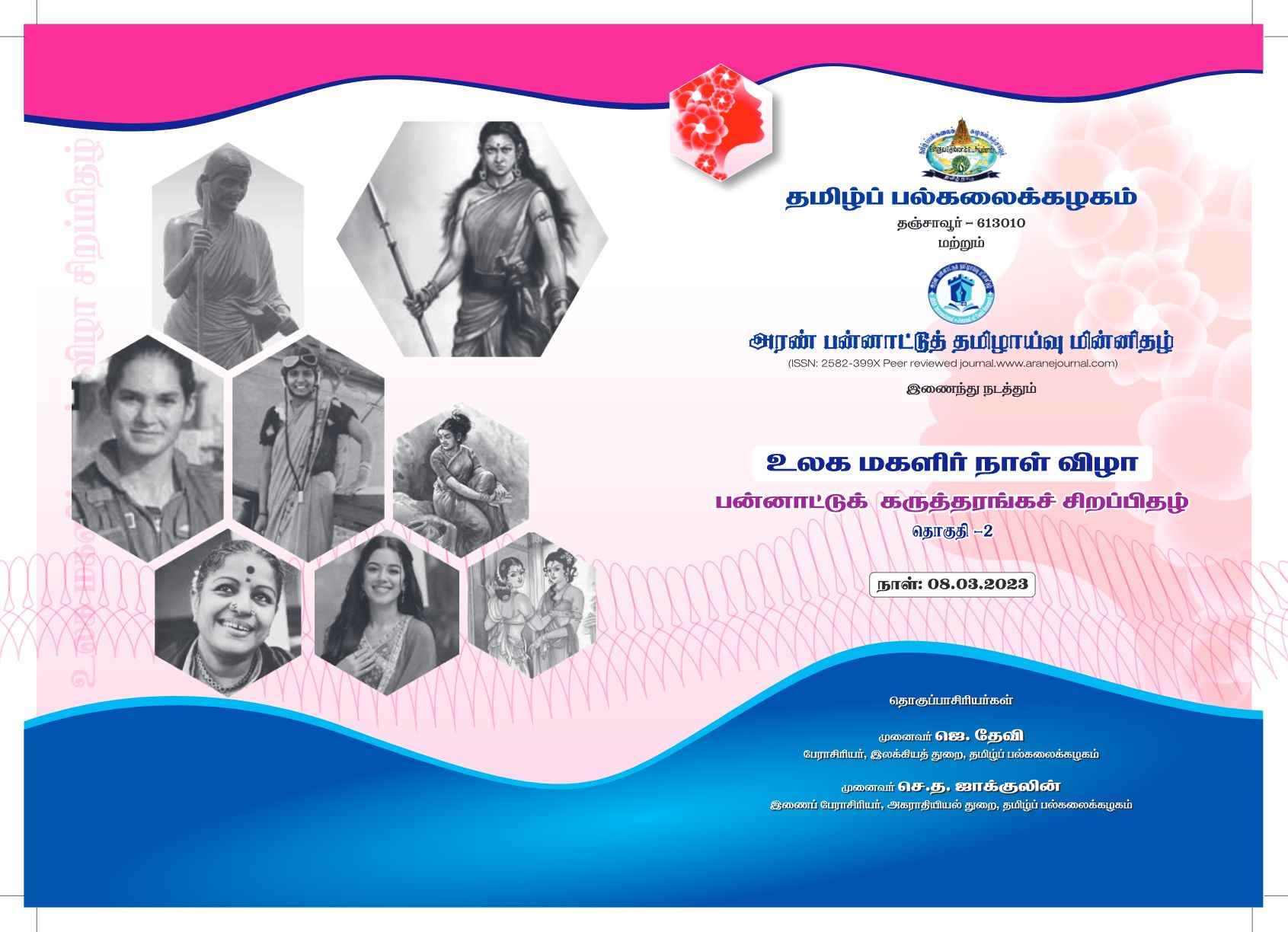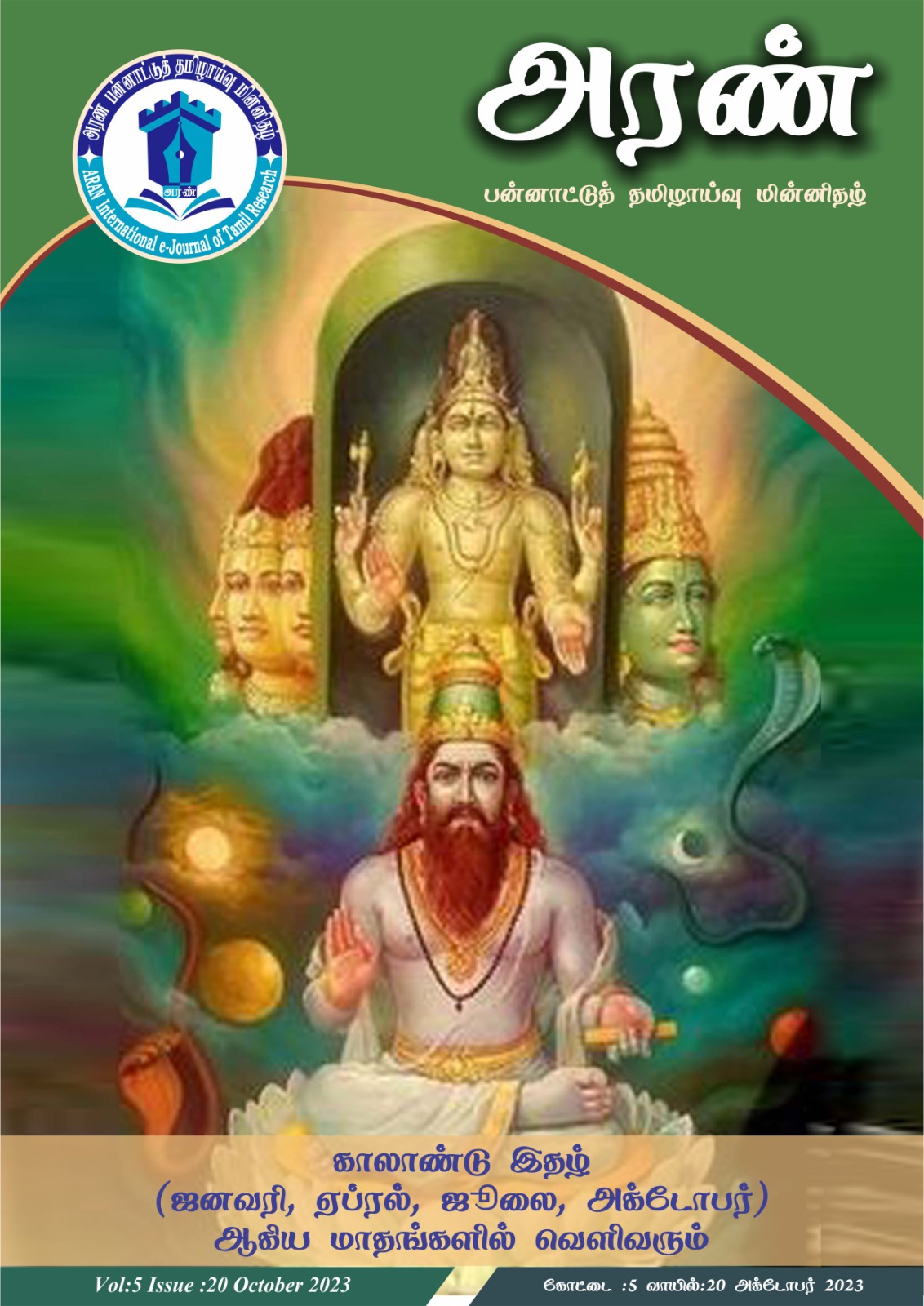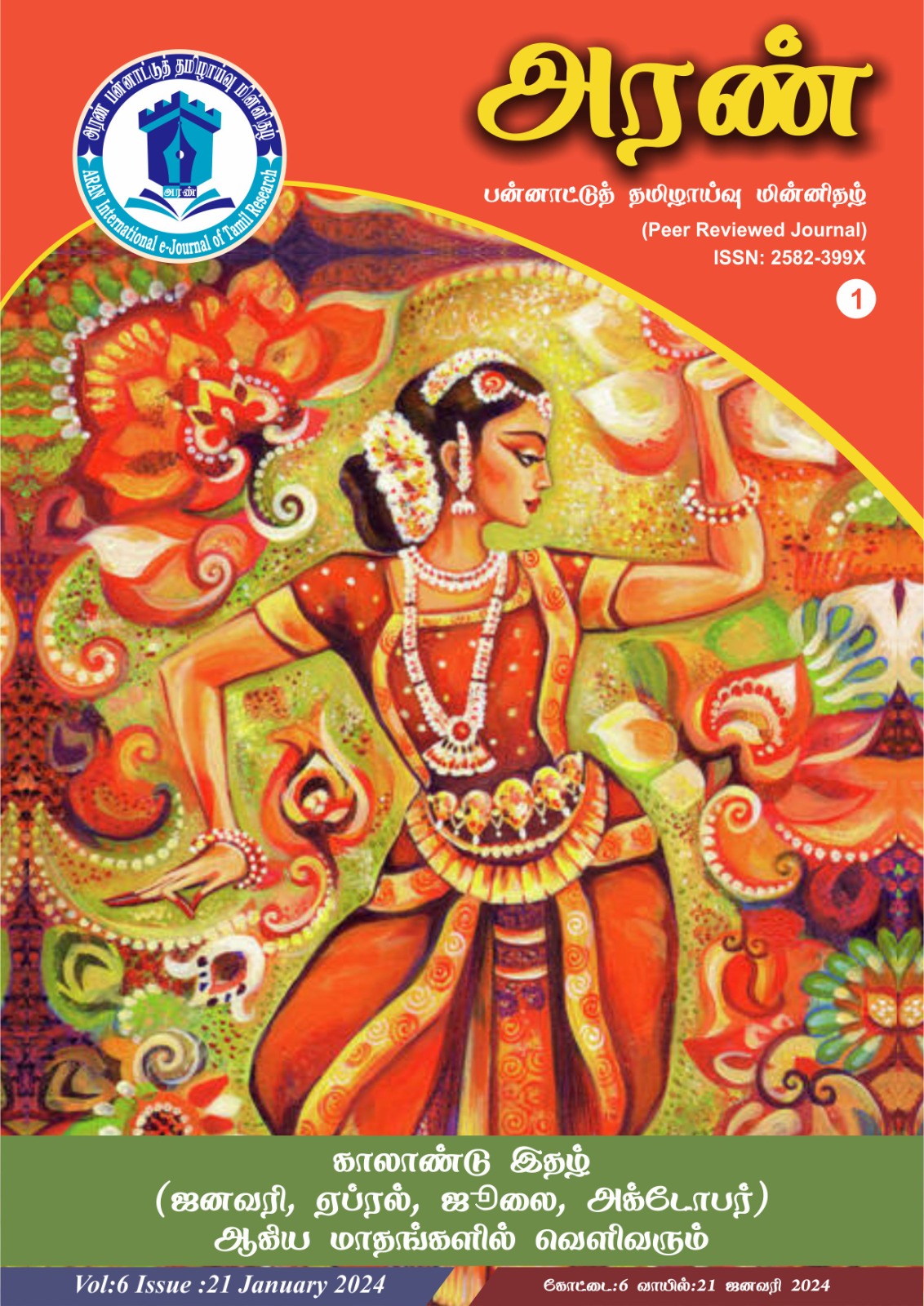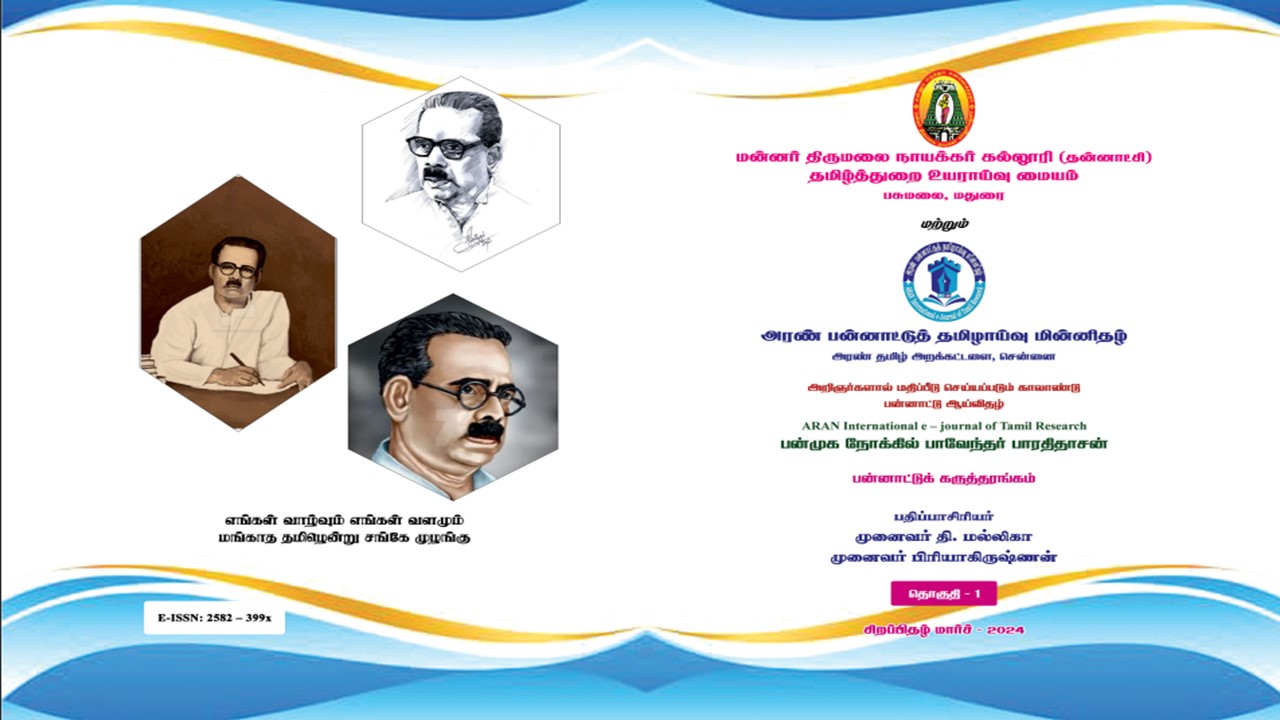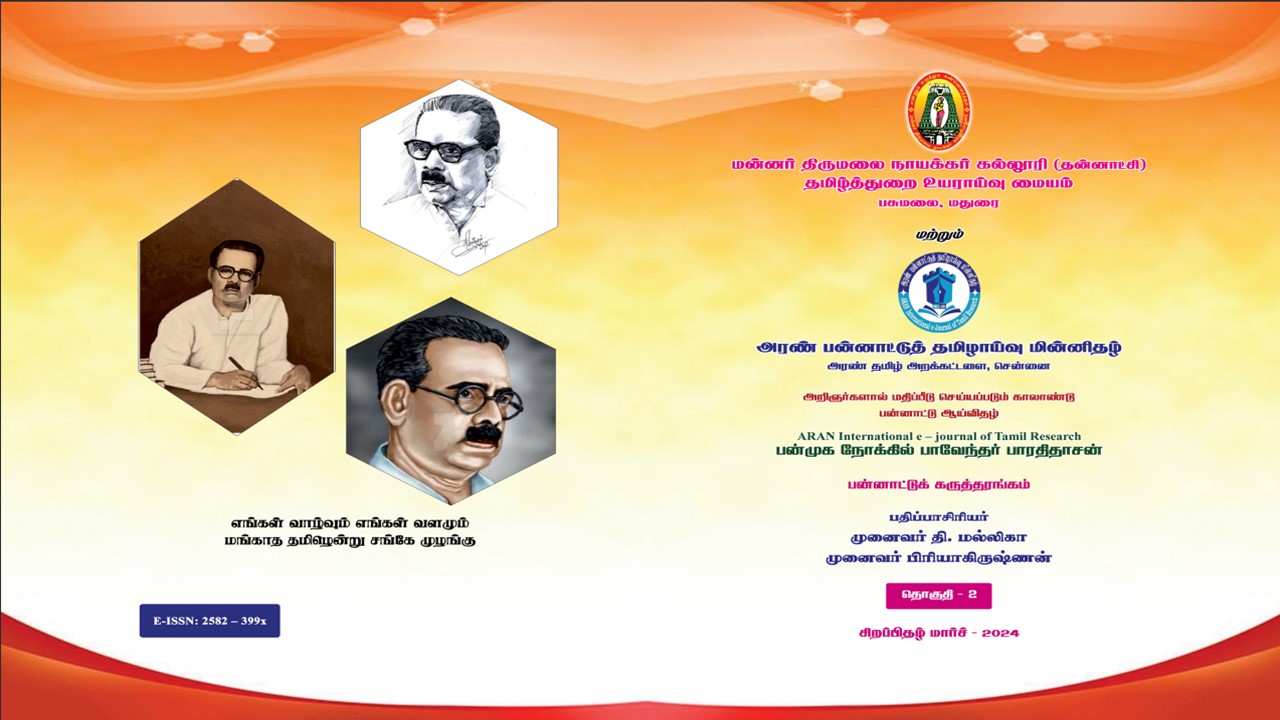Histochemical, Fluorescence, Heavy metals analysis, and Organic qualitative analysis of A. bracteolate Lam.
M. Gajarajan1*, M. Shareef Khan2*,
1. Assistant Professor, Department of Plant Biology and Plant BioTechnology,
The New College, Chennai.
2.Associate Professor and Head of Department of Plant Biology and Plant BioTechnology,
The New College, Chennai.
Abstract: The sections embedded in paraffin were used histochemical studies. Fluorescence analysis of the drug powder as well as plant extracts were carried out by using the method of standard method. During heavy metal stress phenolic compounds can act as metal chelators and on the other hand phenolics can directly scavenge molecular species of active oxygen.
Keywords: Oxygen, Flavonoids, Phenolic acid, and Atomic Absorption Spectroscopy.
Introduction
In India, traditional systems have remained quite separate from Western medicine. In addition to Ayurvedic medicine, which has a Hindu origin, Unani medicine, with its Muslim and Greek roots, is another widely practiced herbal tradition in India. The renewed interest in medicinal plants has focused on herbal cures among indigenous populations around the world, especially those in the tropical rain forests. It is hoped that these investigations will add new medicinal plants to the world’s Pharmacopoeia before they are lost forever. In addition to the destruction of the forests, the erosion of tribal cultures is also a threat to herbal practices. The active principles in medicinal plants are chemical compounds known as secondary plant products. Some secondary products discourage herbivores; others inhibit bacterial or fungal pathogens. Two major categories of these compounds are alkaloids and glycosides (Farnsworth, and Soejarto 1991).
In all parts of the world, indigenous people discovered and developed the medicinal uses of native plants, but it is from the herbal medicine of ancient Greece that the foundations of Western medicine were established. Western medicine can be traced back to the Greek physician Hippocrates (460-377 BC), known as the Father of Medicine who believed that a disease had a natural cause and used various herbal remedies in his treatments. Early Roman writing also influenced the development of Western medicine, especially the works of Dioscorides (1st century AD).
A. bracteolata are distributed in India from Hariyana, Utter Pradesh, West Bengal, Penninsula, Gujarat, Bihar, Andhra Pradesh, Karnataka, Kerala, Tamil Nadu (Vaidya Ratnam, 1994; AsimaChartterjee, 1991 and Anonymous, 1962).
Aristolochiaceae family includes herbs or shrubs, often climbing, usually with more or less unpleasant odour; leaves are alternate, petioled, entire or lobed; stipulate; flowers hermaphrodite, often large, usually lurid, terminal axillary or lateral, solitary racemose or cymose: bracts various, often of perianth simple, corolla, superior, regular or irregular, 3-lobed or tubular and variously shaped: lobes valvate. Stamens 6 or more, adnate in 1 or 2 series to the style-column: anther cells, parallel, extrose, opening dorsally. Ovary 4-6 celled placenta parietal free or meeting in stigamatic lobes. Fruit a capsule or berry. Seeds numerous, horizontal or pendulous: albumen fleshy, copious, embryo minute (Gamble, 1956; Theodore Cooke, 1958; Mathew, 1991 and Mabberley, D.J., 2009).
Genus Aristolochia includes perennial herbs or shrubs, prostrate or climbing. Leaves alternate, entire or lobed, often with a stipule like leaf of an undeveloped bud in the axil. Petiole dilated at base. Flowers solitary or facicled or racemose in the leaf axils, bracts often rather large. Perianth very variable in shape, size, colour, the tube inflate below, then contracted in a cyclindrical neck, then expanded in a dilated oblique usually 2-lipped limb. Stamens usually 6, adnate to and around the style column, anther-cells 2 extrose. Ovary inferior, more or less 6 celled placenta parietal or intruded connate in the axis; ovules very many, 2-seriate, style-column thick, divided above the anthers in a 3-6 lobed stigmatiforous disk. Fruit a septicidal capsule, 6 valved splitting through the placenta. Seed numerous, horizontal, often covered in part with the remains of the placenta, embryo minute (Gamble, 1956; Theodore Cooke, 1958; Mathew, 1991 and Mabberley, D.J., 2009).
Species of Aristolochiabracteolata Lam., Syn. name Aristolochiabracteata Retz., was put forward first (Hendry et al., 1987). A. bracteolata is a slender perennial, stem 12-18 cm long, weak, prostrate, branced, striate and glabrous. Leaves are 1-3 cm long and broad, reniform or broadly ovate, usually obtuse, cordate at the base with a wide shallow sinus, glaucous beneath and finely reticulately veined. Petiole ½-1¼ cm long, glabrous. Flowers are dark purple in colour, 5 cm long, limb entire,
1-tipped, rolled back and emarginated. Flowers are solitary, pedicels with a large sessile orbicular or subreniform bract at the base. Perianth 1-13/4 cm long, base subglobose, tube cyclindrical with a trumpet shaped mouth, tip linear, dark-purple with revolute margins, finely reticulate veined, as long as the tube. Capsule ½-3/4 cm long, oblong ellipsoid, 12 ribbed, glabrous. Seed ¼ in long deltoid with a slightly cordate base (Gamble, 1956; Theodore Cooke, 1958 and Mathew, 1991).
Medicinal uses of A. bracteolata
A. bracteolatais used as purgative, anthelmentic and emmenagogue. Juice of the leaves is applied to foul and neglected ulcers (Chopra et al., 1956). Leaf mixed with castor oil is applied to exzema. Decoction of the leaves is used for treating skin diseases, rheumatism, scorpion bites, dental caries and scabies. The leaves are also said to be analgesic, vermifuge and abortifacient (Anonymous, 1982; Dirdiriet al., 1987; Kirtikar and Basu, 1935).Villagers and tribals of inChittoor District of Andhra Pradesh use the leaf paste in rapid healing of wounds and cuts (Vedavathyet al., 1997).
Decoction of the root is used as a tonic, stimulant, expelling roundworms and antiperiodic. It is also said to be useful in snake bite. Root and seed are used in delivery pain for pregnancy lady (Chopra et al., 1956; Vaidhya Ratnam and MurugasaMudaliyar, 1936).
Chemical constituents of A. bracteolata
The leaves and fruits are reported to contain ceryl alcohol,
β-sitosterol and aristolochic acid (Asolkaret al., 2000). The fatty acid constituents of the seeds is-myristic, palmitic, stearic, lignoceric and oleic acids. A nitrogen containing compound magnoflorine has also been reported in the seeds (AsimaChartterjee, 1991). N-acetylnornuciferine and aristololactam have been reported from the plant. Roots contain alkaloids. Seed contain non-drying oil, a nauseous volatile substance, alkaloids, salts, especially potassium chloride (Nadkarni, 1908andRam et al., 1993,Yoganarasimhan, 2001andHemlata Sati et al., 2011).
Histochemical analysis
The sections embedded in paraffin were used histochemical studies. The sections were deparaffinised and hydrated before staining them for the analysis (Younghen, 1951; Trease and Evans, 1972).
Fluorescence analysis
The fluorescence analysis of the drug powder as well as plant extracts were carried out by using the method of Chase and Pratt (1949) and Kokshiet al., (1958). The behavior of the powder with different chemical agents was observed according to the procedures of Kay (1938); Johansen (1940) and Kokate (2001).
Analysis of the heavy metals such as lead, cadmium, mercury and arsenic(Kaziet al., 1999 and Sahitoet al., 2001)
As a consequence of industrial development the environment is increasingly polluted with heavy metals. Hence there is a need to assess the quality of herbal products and its safety in respect of heavy metals also.
Plant possesses homeostatic mechanisms that allow them to keep correct concentrations of essential metal ions in cellular components and to minimize the damaging effects. Flavonoids, phenolic acids and phenylopropanoids play a potential role as effective antioxidants. During heavy metal stress phenolic compounds can act as metal chelators and on the other hand phenolics can directly scavenge molecular species of active oxygen. Phenolics, especially flavonoids and phenylopropanoids, are oxidized by peroxidase, and act in H2O2 scavenging and phenolic system.
Heavy metal analysis was carried out in Atomic Absorption Spectroscopy by the following method.
Standards and chemicals
All the reagents and chemicals used were of AR grade. All the standard solutions were procured from E.Merck.
Instrument
Thermo FisherM Series, 650902 V1.27 modelatomic absorption spectrometer (AAS) was used in the analysis. The operating parameters:
Lead and Cadmium
Instrument technique : Flame technique
Wavelength (Lead) : 217 nm
Wavelength (Cadmium) : 228.8 nm
Slit width : 0. 5 mm
Lampcurrent (Pb) : 4.0 mA
Lampcurrent (Cd) : 3.0 mA
Carrier gas and flow rate : Air and Acetylene, 1.1 L/min.
Flow rate : 2 ml/min.
Mercury
Instrument technique : Cold vapour technique
Wavelength : 253.7 nm
Slit width : 0. 5 mm
Lamp current : 3.0 mA
Carrier gas and flow rate : Argon, 1.1 L/min.
Flow rate : 5ml/min.
Arsenic
Instrument technique : Flame technique
Wavelength : 193.7 nm
Slit width : 0. 5 mm
Lamp current : 6.0 mA
Carrier gas and flow rate : Acetylene, Argon, 1.1 L/min.
Flow rate : 5ml/min.
The Hallow cathode lamp for Pb, Cd, Hg and As analysis were used as light source to provide specific wavelength for the elements to be determined.
Preparation of the sample
Accurately weighed 500 mg of the each dried plant powder was taken in a round bottom flask separately. To this, 5 ml of conc. nitric acid (AR) was added and refluxed for half an hrs on a hot plate at 60-80ºC. It was cooled, added 5 ml of conc. nitric acid and warmed on a water bath. 2 ml of 30% hydrogen peroxide solution was added to the above mixture and warmed till a clear solution was formed. Then it was cooled, filtered through Whatmann No: 41 filter paper, diluted with deionised water and made upto 100 ml in volumetric flask.
Calibration of instruments
More than three working standard solutions of elements to be determined were prepared in the concentration range of the elements. The instrument was calibrated with prepared working standard solutions. The calibration curve was obtained by plotting for concentration versus absorbance. Reagent blank reading was taken and necessary correction was made during the calculation. After calibrating the instrument, the digested solution of the sample was subjected to analysis.
Organic qualitative analysis of A. bracteolate
The successive extracts viz.n-hexane, chloroform and alcohol were subjected to organic qualitative analysis to find out the various classes of organic compounds present in the extracts by using standard methods (Harborne, 1998; Richard,1998; Overton, 1963; Brain and Turner, 1975).
Test for Flavonoid
A few mg of the extract was dissolved in alcohol and treated with magnesium bits and few drops of concentrated hydrochloric acid. Gently warmed on a boiling water bath. Appearance of pinkish red colour indicates the presence of flavonoid.
Test for Phenol
A few mg of the extract was dissolved in alcohol was treated with few drops of 0.1% alcoholic ferric chloride. Appearance of dark pink colouration indicates the presence of phenol.
Test for Alkaloid
- A few mg of extract was dissolved in alcohol and treated with few drops of Mayer’s reagent. Formation of cream white precipitate indicates the presence of alkaloid.
- A few mg of extract was dissolved in alcohol and treated with few drops of Dragendorff’s reagent. Formation of red orange precipitate indicates the presence of alkaloid.
Preparation of Dragendorff’s reagent
Solution A : 0.85 g of basic bismuth nitrate was dissolved in
10 ml of acetic acid and 40 ml of distilled water.
Solution B : 8 g of potassium iodide was dissolved in 20 ml
of distilled water.
5 ml of solution A and B each was mixed with 20 ml of acetic acid and 100 ml of distilled water.
Mayer’s reagent
1.358 g of mercuric chloride was dissolved in 60 ml of distilled water. 5 g of potassium iodide was dissolved in 10 ml of distilled water. Both solutions are mixed and made upto 100 ml with distilled water.
Test for Triterpenoid
A few mg of the extract in a dry test tube was treated with a tin bit and few drops of thionyl chloride. Gently warmed on a water bath. Formation of reddish pink colour indicates the presence of triterpenoid.
Test for Steroid
Liebermann Burchard test: A few mg of the extract dissolved in chloroform was treated with 1 ml of glacial acetic acid and 1 ml of acetic anhydride warmed, cooled under the tap. Two drops of concentrated sulphuric acid was added along the sides of the test tube. Appearance of green or bluish green colour indicates the presence of steroid.
Test for Amino acid
A few mg of the extract was dissolved in alcohol or water and was treated with few drops of Ninhydrin reagent. Violet or pink colour indicates the presence of amino acid.
Test for Coumarin
A few mg of the extract was dissolved in alcohol is treated with 5% alcoholic sodium hydroxide. Appearance of dark yellow colour indicates the presence of coumarin.
Test for Saponin
A few mg of the extract was dissolved in alcohol and shaken with enough water. Appearance of permanent lather indicates the presence of saponin.
Test for Glycoside
Anthrone-Sulphuric acid test: A few mg of the extract was mixed with equal quantity of anthrone and treated with two drops of concentrated sulphuric acid. The mixture is rubbed with a glass rod. Heated gently on water bath. Dark green colour indicates the presence of free sugar or glycoside.
Test for Tannin
A few mg of the extract was dissolved in water and is treated with basic lead acetate solution. Appearance of copious precipitate of the lead salt indicates the presence of tannins.
Test for Quinone
A few mg of extract was alcohol was treated with 0.5% of sodium hydroxide. Deep colouration as pink, purple and red indicates the presence of quinonoid compound.
Test for Furanoid
A few mg of the extract was alcohol was mixed with paradimethyl amino benzaldehyde and few drops of concentrated hydrochloric acid. The mixture is heated on a water bath. Appearance of reddish pink colour indicates the presence of furanoid derivative.
Results and Discussion
Table 1: Heavy metal analysis of A. braeteolata
|
Elements |
A. braeteolata(ppm) |
Permissible Limits (ppm) (Anonymous, 1998, 2008) |
|
Pb |
0.8305 |
10 |
|
Cd |
0.0624 |
0.3 |
|
Hg |
0.0109 |
1
|
|
As |
0.1307 |
3
|
Table 2: Organic qualitative analysis of the various extracts of A. braeteolata
|
Class of compound |
A. braeteolata |
||
|
n-hexane |
Chloroform |
Alcohol |
|
|
Flavonoid |
- |
- |
- |
|
Phenol |
- |
- |
+ |
|
Alkaloid |
- |
+ |
+ |
|
Triterpenoid |
- |
- |
- |
|
Steroid |
+ |
+ |
+ |
|
Amino acid |
- |
- |
+ |
|
Coumarins |
- |
+ |
+ |
|
Saponin |
- |
- |
+ |
|
Sugar |
- |
- |
+ |
|
Tannin |
- |
- |
+ |
|
Quinone |
- |
- |
+ |
|
Furan |
- |
- |
- |
|
|
+ - Positive |
||
A. bracteolata belongs to the Aristolochiaceae. Traditional uses of the whole plant A. bracteolata can be used as purgative, anthelmentic, emmenagogue, analgesic, vermifuge and abortifacient. The investigations pertaining of pharmacognostical aspects of the both plants are discussed.
Histochemical colour reaction
The histochemical test showed the presence of cellulose, oil globules, lignin and starch grains were observed in A. bracteolata.
Fluorescence analysis
The powdered materials and extracts of both plants showed characteristics colour with various reagents in ordinary light and with filtered ultra violet light in the A. bracteolata are given in. The test provided information on the fluorescence compound of the material and the specific colour reactions of the powder which can be used as diagnostic tool for the authentication of the drug.
Organic qualitative analysis of the various extracts of
A. bracteolata
Results on the preliminary organic quantitative analysis of the
n-hexane, chloroform and alcohol extracts of A. bracteolataare shown in Table 2. n-hexane extracts of A. bracteolate did not answer for alkaloid, flavonoid, phenol, triterpenoid, amino acid, coumarin, saponin, sugar, tannin, quinone and furan.
Chloroform extracts of A. bracteolate showed positive for Alkaloid, steroid and coumarin; whereas did not answer for flavonoid, phenol, triterpenoid, amino acid, saponin, sugar, tannin, quinone and furan.
Ethanol extracts of A. bracteolatashowed positive for alkaloid, phenol, steroid, amino acid, coumarin, saponin, sugar, tannin and quinine; whereas did not answer for flavonoid, triterpenoid and furan.
CONCLUSION
The present study was taken up to investigate of Histochemical, Fluorescence, Heavy metals analysis, and Organic qualitative analysis of A. bracteolate. Lack of information’s in these aspects of relating to both species have prompted has to taken up the present study.
Preliminary phytochemical analyses of the n-hexane, chloroform and alcohol extracts of A. bracteolate. The organic qualitative chemical analysis of the extracts showed the presence of steroid in n-hexaneextract; alkaloid, steroid and coumarins in chloroform extract; phenol, saponin, sugar, tannin and quinine in alcohol extract.
Heavy metal analysis of both species showed that the presence of lead, mercury, cadmium and arsenic were below the permissible limit. Thus showing that drugs are safe for internal use.
In conclusion, this study has provided a scientific evaluation of A. bracteolata and has thrown light on the physicochemical standards, fluorescence analysis and phytochemical studies.
References
Farnsworth, N.R., and Soejarto, D.D. 1991. Global Importance of Medicinal Plants. In Akerle, O., Heywood, V., and Synge, H. (Eds.), Conservation of Medicinal Plants. Cambridge University Press, Cambridge.
Vaidya Ratnam Varier’s, P.S. 1994. Indian Medicinal Plants. Orient Longman Publication. Arya Vaidya Sala. Kottakkol. p. 196-198.
Asima Chartterjee, and Satyesh Chandra Pakrashi. 1991. The Treatise on Indian Medicinal Plants, Publications & Information Directorate, New Delhi, Vol. I, p. 61-63.
Anonymous. 1962. The Wealth of India. A Dictionary of Indian Raw Materials and Industrial Products. Raw Materials CSIR, New Delhi, Vol. I, p. 117-118.
Gamble, J.S. 1956. Flora of the Presidency of Madras, Botanical Survey of India, Calcutta, Saraswathy Press Ltd., Vol. II, Part - IV, p. 841.
Theodore Cooke. 1958. Flora of the Presidency of Bombay. Botanical Survey of India, Calcutta, Saraswathy Press Ltd., Vol. III, p.16.
Mathew, K.M. 1983. An Excursion Flora of Central Tamil Nadu, The Rapinat Herbarium, St. Joseph’s College, Trichirapalli, India, Oxford & IBH Publishing co. pvt Ltd., Vol. III, Part - I, p. 1343-1344.
Mabberley, D.J. 2009. Mabberley’s Plant-Book. A portable dictionary of plants, their classification and uses, 3rd Edition., Cambridge University Press. p. 67.
Hendry, A.N., Kumari, G.R., and Chitra, V. 1987. Flora of Tamil Nadu, Botanical Survey of India, Southern Circle, Coimbatore, India. Series I, Vol. II, p. 201.
Chopra, R.N., Nayar, S.L., and Chopra, I.C. 1956. Glossary of Indian Medicinal Plants, CSIR, New Delhi, p. 24-25.
Anonymous. 1982. The Wealth of India. The Wealth of India. Raw Materials Vol. IA, CSIR, New Delhi, p. 88.
Dirdiri, N.I., Brakat, S.E., and Adam, S.E. 1987. Vetrinary and Human. Toxicology,
Kirtikar, K.R., and Basu, B.D. 1935. In: Indian Medicinal Plants. Vol. I, Bishan Singh and Mahendra pal Singh, International Book distributors, Dehradun, p. 139.
Vedavathy, S., Mrudula, V., and Sudhakar, A. 1997. Tribal Medicine of Chittoor District, Andhra Pradesh, India. Tirupati: Published by Herbal Folklore Research Center, Tirupati, p. 31-35.
Asolkar, L.V., Kakkar, K.K., and Chakre, O.J. 2000. Glossary of Indian Medicinal Plants. National Institute of Science Communication New Delhi. (A.K.), Part - I, p. 88.
Nadkarni, K.M. 1908. Indian Meteria Medica. Popular Prakasam Pvt Ltd., Bombay, p.
Yoganarasimhan, S.N. 2001. The Medicinal Plants of India, Tamil Nadu, Regional Research Institute (Ayurvedha), Cyber Media. Bangalore, India, Vol. II, p. 55-56.
Hemlata Sati, Bhawana Sati, Dr Sarla Saklani, Prakash Chandra Bhatt, and Abhay Prakash Mishra. 2011. Phytochemical and Pharmacological Potential of Aristolochia indica: A review. Research Journal of Pharmaceutical, Biological and Chemical Sciences. Vol. II (4), p. 647.
Younghen, H.W. 1952. Pharmaceutical Botany. 7th Edition., The Eleckiston company, Toronto.
Trease, G.E., and Evans, W.C. 1972. A Text BooK of Pharmacognosy. Bailliere Tindall Book Published by Cassell London.
Chase, C.R., and Pratt, R. 1949. Fluoresence of powdered vegetable drugs with particular reference to development of a system of identification. Journal of American Pharmaceutical Association Science, 28, p. 324-331.
Kokshi, C.J., Kokoshi, R.J., and Sharma, F.J. 1958. Fluorescence of powdered vegetables drugs under ultra violet radiation. Journal of American Pharmaceutical Association, 47, p. 715-717.
Kay, L.A. 1938. Microscopical Studies of Drugs. Ist Edition., Bailliere, Tindal and Cox, London, p. 17-18.
Kokate, C.K., Purohit, A.P., and Gokhale, S.B. 2001. Pharmacognosy, 17th Edition., Nirali Prakashan, Pune: p. 3-7, 114-117, 120.
Johansen, D.A. 1940. Plant Micro Technique Mc. Graw Hill Book Company Inc., New York, London, p. 183-202.
Kokate, C.K., Purohit, A.P., and Gokhale, S.B. 2000. Pharmacognosy, 15th Edition., Nirali Prakashan, Pune: p. 1-3.
Kazi, T.G, Ansari, T.P., and Kazi, G.H. 1999. Asian coordinating group for chemistry (ACGC), Chemical Research Communication, 9: p. 51-56.

